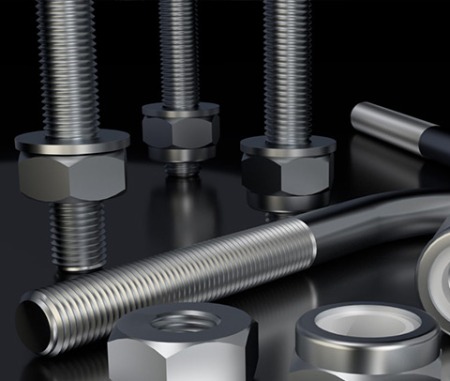Cold Heading Wire Rod is a formable and durable raw material used in the manufacturing of fasteners. These include bolts, screws, nuts and rivets.Cold heading quality wire is produced by choosing a specific raw material and drawing it to a size using a careful draw process. This allows us to maintain strict control of the surface and chemical composition required for superior products.Stainless steel Cold Heading Wire Rods are commonly used for the manufacturing of screws, rivets, bolts and nails. They are manufactured using a cold forming process whereby a wire is struck and inserted into a die without the need for heat.Cold heading is an excellent method of producing fasteners with no waste material and an increased tensile strength. It is also cost effective and has good dimensional accuracy and surface finish.

The Cold Heading Wire Rods that we carry are available in a range of grades and alloys. Our domestic and DFARS compliant material is available in stock, or can be processed to custom sizes and tempers with short lead times.Cold heading wire is made by choosing a particular raw material chemistry to withstand swedging, heading and forming with great quality. This ensures that it is suitable for fastener and cold heading applications such as bolts, nuts, screws, electrical contacts, rivets, and nails.Cold Heading Wire Rod are used for the manufacture of bolts, screws, nuts, rivets, and other similar fasteners. They are manufactured on horizontal presses equipped with means of feeding wire from coil, straightening, cutting to length and then upsetting to form the fastener in one or more blows.Cold heading is generally carried out on low carbon steels having hardnesses from 75 HRB to 87 HRB. These are easier to upset than medium carbon and alloy steels.
However, the ability to cold head depends on the microstructure of the steel and the tensile properties of the material. The workability of metals with very high carbon and manganese content decreases significantly compared to the lower grades.The cold heading process is particularly difficult for long slender bolts, as the deformations result in a need for a subsequent straightening. This is a costly operation, extends the lead time and produces scattering of mechanical properties between different bolts.Cold Heading Wire Rod is produced by forming wire into a specific shape without the use of heat. A piece of metal wire is struck while inserted into a die and upset into the desired shape, resulting in a stronger product without any loss of material.
Cold heading can be performed on a variety of different materials including brass, copper, steel, stainless steel, nickel alloys, and aluminum. It is a popular method used for many fastener applications.It is important to choose the right metal for your specific application. There are a number of factors that affect the finished product, such as chemical composition and surface quality.Ideally, cold heading wire needs to be made from a low carbon aluminum killed steel that has good forgeability properties. This is important to minimize the free carbon and nitrogen in solution that will form carbides and nitrides as the wire is deformed.Cold Heading Wire Rod is an established manufacturing process that involves molding wire into a specific shape without the need for heat. It is a highly productive method that is used to manufacture rivets, bolts, screws and many other fastener types.

